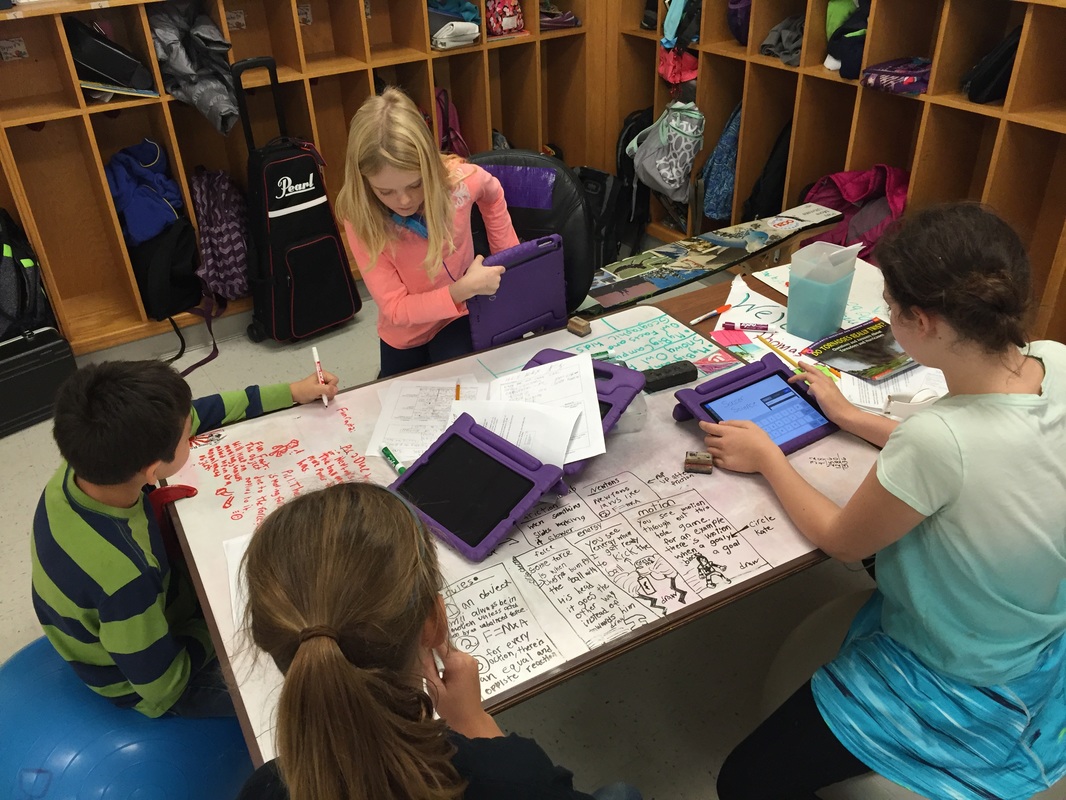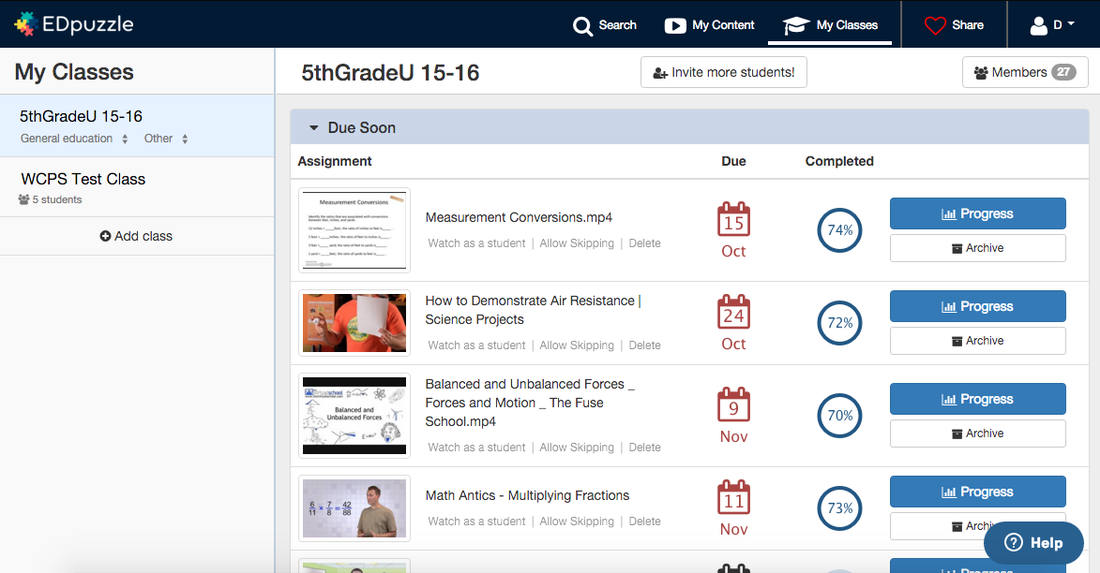Never enough time... or is there?
Teachers will often claim that there is not enough hours in a day, days in a week, or weeks in a year to get through the essential curriculum that their students need to be successful. One of the best ways to provide students with rich and engaging learning experiences that address multiple standards is through an interdisciplinary, blended online unit of study. Although this type of instructional planning can be difficult and time consuming, access to a team of innovative and positive colleagues can make the process much more efficient. As a 5th grade magnet teacher at a 1:1 Apple Distinguished School for integrated arts and technology, I have had the opportunity to plan and co-plan several integrated units of study. My recent experiences at UMUC have also allowed me to plan similar lessons with other creative teachers of various grade and technology levels.
In addition to my experiences, I have studied the writing of other dedicated educators who also share a passion for planning and delivering interdisciplinary instruction that utilizes technology. For example, a study conducted by Dr. Michael Pregot dissects the correlation between teachers using blended learning and students achieving the desired objectives. Specifically Pregot writes, “In comparing final students’ achievement levels using three distinct modalities of instruction, the instructional technique that incorporated components of both direct instruction with online assignments, proved to be significantly higher in obtaining results than merely using a Web-based environment or just using the lecture only instructional model” (Pregot). In other words, Pregot found that compared to two other instructional practices, the use of blended instruction helped students make the most significant achievements. Studies and scholarly sources like these have helped me understand the benefits of using blended and interdisciplinary approaches to teaching.
I am eager to share my success stories and research about using an interdisciplinary and blended approach to plan and deliver online unit plans that are for a diverse group of learners. A combination of experience and research have helped me to shape my own ideas about what is necessary for planning integrated and blended units. Furthermore, I am confident that this outline will provide other educators with the tools and information they need to curate their own collection of interdisciplinary, blended online units of study.
Why the interdisciplinary approach?
My colleagues and I began with a few of the Social Studies standards that come from Maryland’s State Curriculum. Although these standards will soon be shifting to the new C3 Framework, we agreed that standards regarding economic progression in the original colonies were highly important to teach. After consulting a 3-4 week timeline, we chose a reasonable amount of Social Studies standards that could be taught and assessed at a reasonable pace. We redefined these standards in terms that helped describe measurable goals for students, also known as student outcomes. From there we immediately saw a connection between economics and Math. This expanded to further connections that brought in Reading and Writing standards from the Common Core that included research, speaking and listening, and writing to inform. By the end of our initial unit planning session, we were all very excited about a series of lessons that would seamlessly infuse the use of technology with Social Studies (history/ economics), Math, Reading, Writing, and Language.
The teachers are not the only ones that get excited about an interdisciplinary approach to teaching. Students also enjoy lessons that teach and assess multiple subject areas at once. In Paul Stapleton’s article, “Language teaching research: Promoting a more interdisciplinary approach” students express their opinions about lessons that infuse learning a language with other subjects. Specifically Stapleton writes about how students felt more motivated to learn the language (Stapleton).
Overall, the idea of integrating multiple subjects and disciplines into one lesson or unit plan is extremely beneficial for the teacher and his or her students. Planning instruction with an interdisciplinary approach allows teachers to teach and assess multiple standards at once. In reality, this method of instruction aligns closely with the way problems and tasks are solved in the real world. Most careers in today’s society do not involve a series of isolated tasks or disciplines. In other words, the innovative adults that are positively contributing to the global economy are able to solve problems that require Science and Math rather than just one or the other. If the 21st century workforce is interdisciplinary, so should today’s instruction.
Benefits of blended learning
In September 2014 Edutopia published an article titled “Blended Learning: Making it Work in Your Classroom.” The article describes the successes that the P.K. Yonge Developmental Research School has had with blended learning practices. Specifically the article about this Gainesville, Florida school reads, “blended learning provides the school with a variety of ways to address student needs, differentiate instruction, and provide teachers with data for instructional decision-making” ("Blended Learning: Making it Work in Your Classroom"). Personalizing instruction and gathering useful data are both critical components that go into planning a well written interdisciplinary, blended online units of study.
During the unit planning process, teachers need to think about three main principles; access, engagement, and time. Teachers must first understand what technology tools their students have access to at school and at home. They also need to be cognizant of logistics such as wireless connectivity and device support. In other words, all students in a class might claim they have internet access at home. If half of these students claim they only have access to an iPod or iPhone, there is a possibility that the instructional resource could not work on that device. I have found that even students in high poverty areas often have out of school access to the internet. Whether it be at home or a public place like the library, students as young as 4th and 5th grade are already posting videos to YouTube, blogging, and gaming online. For students who claim that they are not be able to engage in digital media consumption outside of school, I look for alternative solutions. For example, I have even offered to burn DVDs for students in the past. Not a single student has ever taken me up on this offer.
Once the teacher has organized a way for all students to access digital media sources he or she must set concrete expectations for consuming the content. If students are to be accessing a video for homework then there needs to be a class agreement or policy that holds all students accountable for doing so. One of the best ways to establish this “no excuses” environment is to pick content that is highly engaging for students. For example, a video that is simply a screencast of a teacher reading through his or her lecture slides is not as entertaining as a cartoon or animated production like Brain Pop. During the collaborative planning process that my UMUC colleagues and I just endured we looked for digital media content that appealed to visual and kinesthetic learners. For example, an interactive map of trade routes during the 1600s is far more engaging than a diagram from a book or article. Using engaging content in a blended learning environment can also benefit the school’s budget. A study on the effect blended learning has had in New Orleans schools describes this positive outcome in more detail, “blended learning saves educational organizations money when facilities, personnel, and textbook costs are examined- frequently with enhanced academic outcomes” (Alijani).
The last step to planning a unit or lesson that will embed blended learning practices is thinking about time. Teachers must think about the amount of time that students will spend consuming content in an online environment versus direct instruction. Although students may be capable of learning content through a video this does not mean that every skill or standard should be taught this way. For instance, an essential component of the Colonial Economics unit plan I co-authored with my UMUC colleagues is note taking and research. Throughout the unit students will learn the Cornell note taking strategy and Big 6 research methodology. During the planning process of this unit we all agreed that explicit modeling of both Cornell and Big 6 research would be necessary for 5th graders. In addition to this face to face instruction, students will also watch a short video clip about the Big 6 research method. Reinforcing skills and content like this is one of the major benefits of blended learning. In other words, students do not always need to be engaging in digital media that is teaching them skills or content for the first time. Blended learning sources can also serve as a second or even third dose of instruction for students.
As stated in Michael Pregot’s “The Case for Blended Instruction: Is It a Proven Better Way to Teach?” the use of blended learning has potential to reach students with different learning styles and increase content retention. By combining an interdisciplinary approach to teaching with blended learning practices, teachers can plan and deliver lessons that enable all students to achieve the initial learning outcomes.
Tips for managing and planning an online unit
The article about New Orleans schools and blended learning offers more advice for implementation stating, “the general idea is to dedicate a portion of the day as teacher led instruction, and at other times students enhance skills and learn at their own pace via online or computer based software also known as Course Management Software (CMS)” (Alijani). For teachers like myself who plan to use the Colonial Economics unit plan in a 1:1 classroom environment, using a Course Management Software like Google Classroom or Edmodo is a great idea. I personally have my students submit all of their work through My Big Campus and Google Drive. This allows the online portion of our class to stay organized and accessible from home.
Regardless on how the Colonial Economics unit plan is implemented, my number one suggestion is to be sure that students are understanding whether or not they have achieved each learning objective. My students have a paper copy of the Common Core Reading, Writing, and Math standards in their desk. These standards are reworded in student friendly terms as “I can” statements. We highlight and check off these measurable objectives as they are mastered. This practice allows students to truly conceptualize what the intended learning is or was and when it has been achieved.


